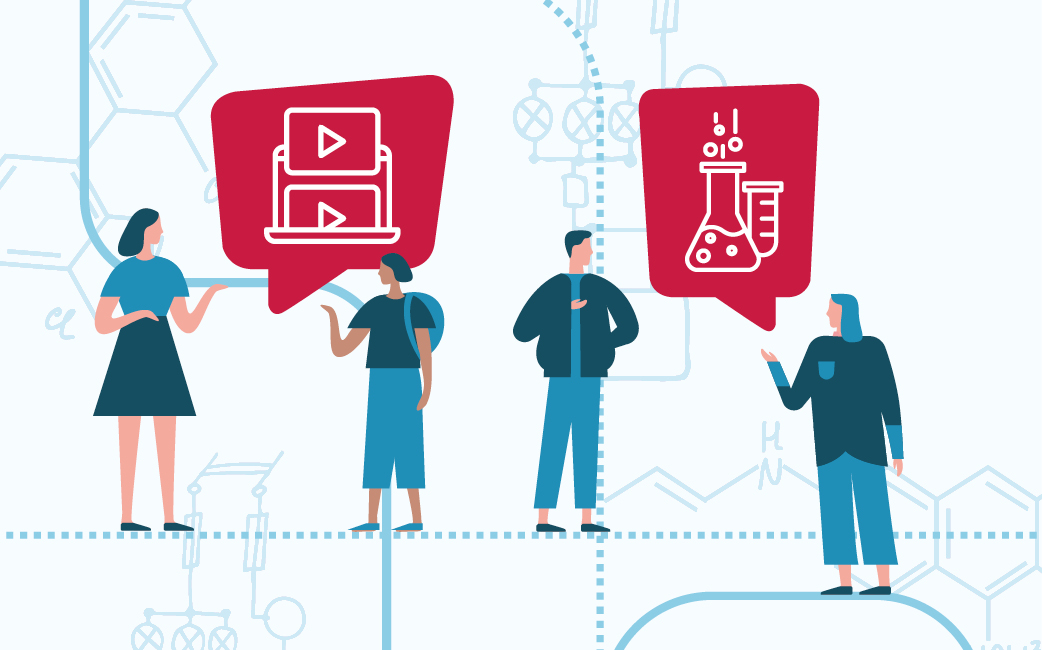What is a science communicator?
I knew what I wanted to do, but I didn’t know it had a name. I mentioned to a friend that I’d love to work at the Natural History Museum and she put me in touch with her friend who worked in research there. When I explained the kind of thing I wanted to do, which was more about curating exhibits and contact with the public, she said “So it’s more science communication that you want to do”. Is it? OK.
Science communicators are effectively mediators, presenting scientific information through accessible mechanisms. Many professions qualify as science communicators; journalists, TV and film producers, writers, museum facilitators, designers, teachers, artists, animators, performers and scientists increasingly under pressure to popularise and engage the public in their research. Science communicators are increasingly influential in the public’s attitudes towards science, with the news being our primary source of information once we leave education. In this digital age, anyone can write ‘news’. Information is instantly accessible and shareable and fake news is prevalent. Seeing the scientific world in terms of news stories can therefore be dangerous and misrepresentative of the wider scientific landscape. Scientists are becoming aware of the importance of public visibility and are increasingly media trained themselves.
“Science communicators are effectively mediators, presenting scientific information through accessible mechanisms.”

Where did science communication come from?
Since the Bodmer report of 1985 ‘The Public Understanding of Science’ attention has turned to public understanding of science, rather than knowledge, and approaches have been more dialogue and participation-focussed. Acknowledging the importance of allowing the public to enter into conversations about science, what it means to them and how they can contribute their own, valuable knowledge and experience to its pursuit and applications. This dialogue has allowed the public to contribute to the direction and practise of science. For example, patients are increasingly being consulted regarding the direction of research into treatments. The public are also being incorporated into research processes, such as through citizen science initiatives. Previously, the public might be consulted about a new scientific development once it was in existence, and often it didn’t get the desired response. Increasingly, an ‘upstream’ approach is now being employed, where the public is consulted at the developmental stage or before, so they can have an input and the developers can gauge public reaction early on. This ethos can contribute to a more inclusive and holistic approach science.
My route into science communication
Some google-ing revealed a whole science communication industry that I was not aware of. My degree in Behavioural Biology was 12 years behind me at this point, so no-one was going to employ me in science communication as I stood. I applied and was accepted to the M.Sc. Science Communication at U.W.E., Bristol which sounded applied, relevant and interesting and would work around my full-time job. I applied for a scholarship, designing a public engagement activity and started to doubt whether I could do this. It had been so long since I’d studied and I’d never studied this. That same week, I was awarded the scholarship! I totally could do this.
The students in my cohort ranged from fresh graduates to those in their sixties. Their backgrounds included teaching, TV production, magazine writing, illustration, engineering and zoo educators.
The programme offered ‘Learning Lab’ placements with local employers where you can gain experience of working in industry. Of the five I applied for I was offered four. I accepted one at SS Great Britain Museum, where I worked on their ‘Future Brunels’ programme, and managed to secure another ‘informally’, at National Museum Cardiff, where I created a visitor leaflet on the work of conservators at the museum.
I got a weekend job as a Science Communicator and Presenter at Techniquest Glyndŵr Science and Discovery Centre which meant I could officially call myself a ‘Science Communicator’ and looked for things to get involved in that would help get me into science communication circles. From that point, things moved really quickly.
I am currently working at STEM Learning on a 4-year project to employ a number of STEM Club ‘Champions’ across England who will deliver CPD to secondary school educators on establishing and progressing their STEM clubs. The role offers me opportunity to affect change in the STEM education landscape and develop my own ideas.
There are so many opportunities get involved in initiatives and organisations that interest you if you’re willing to volunteer, which is what you’ve got to do when you’re trying to break into a new career. My advice to anyone wanting to break into science communication is get involved in as much as you can and don’t be afraid to approach people offering your services.


